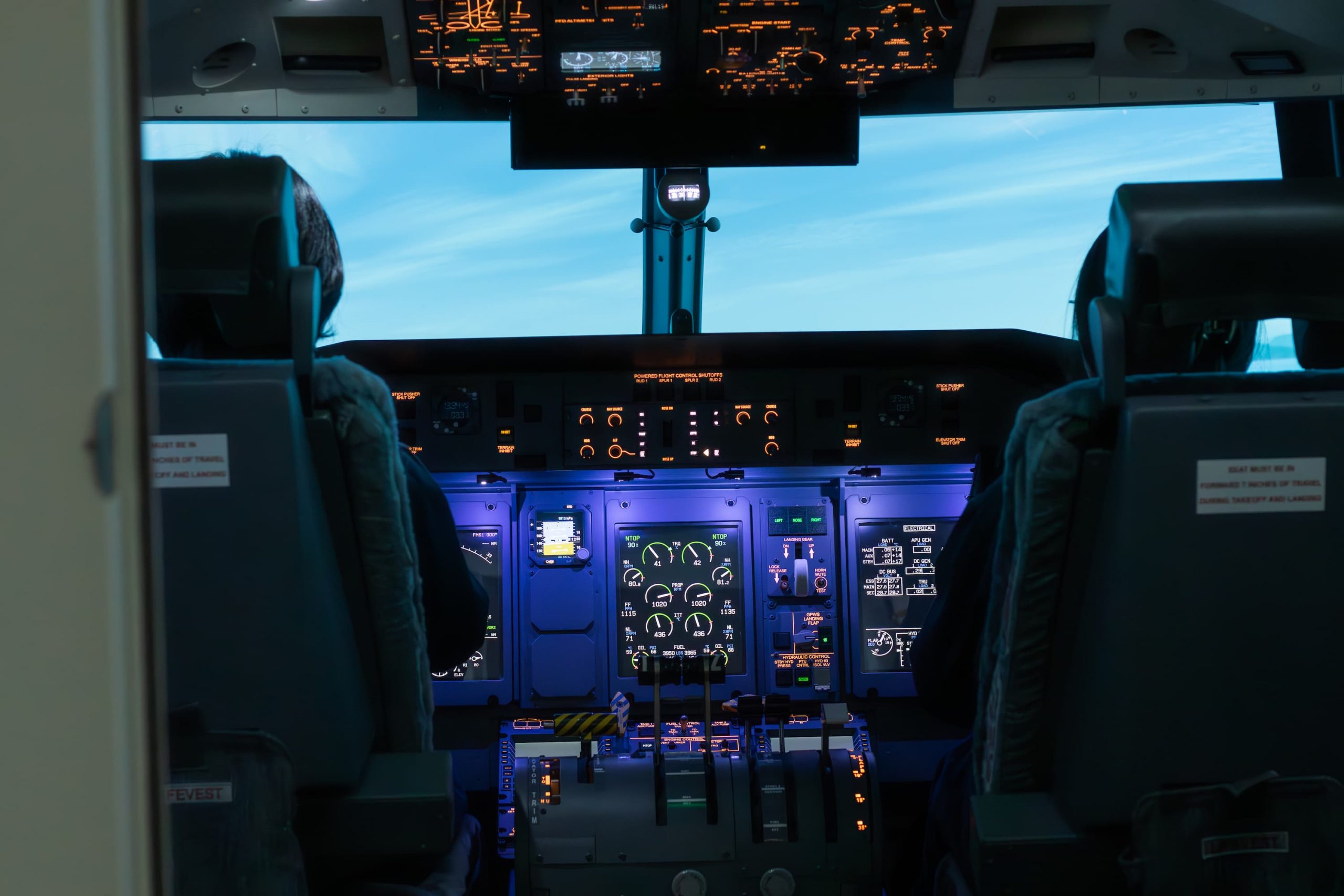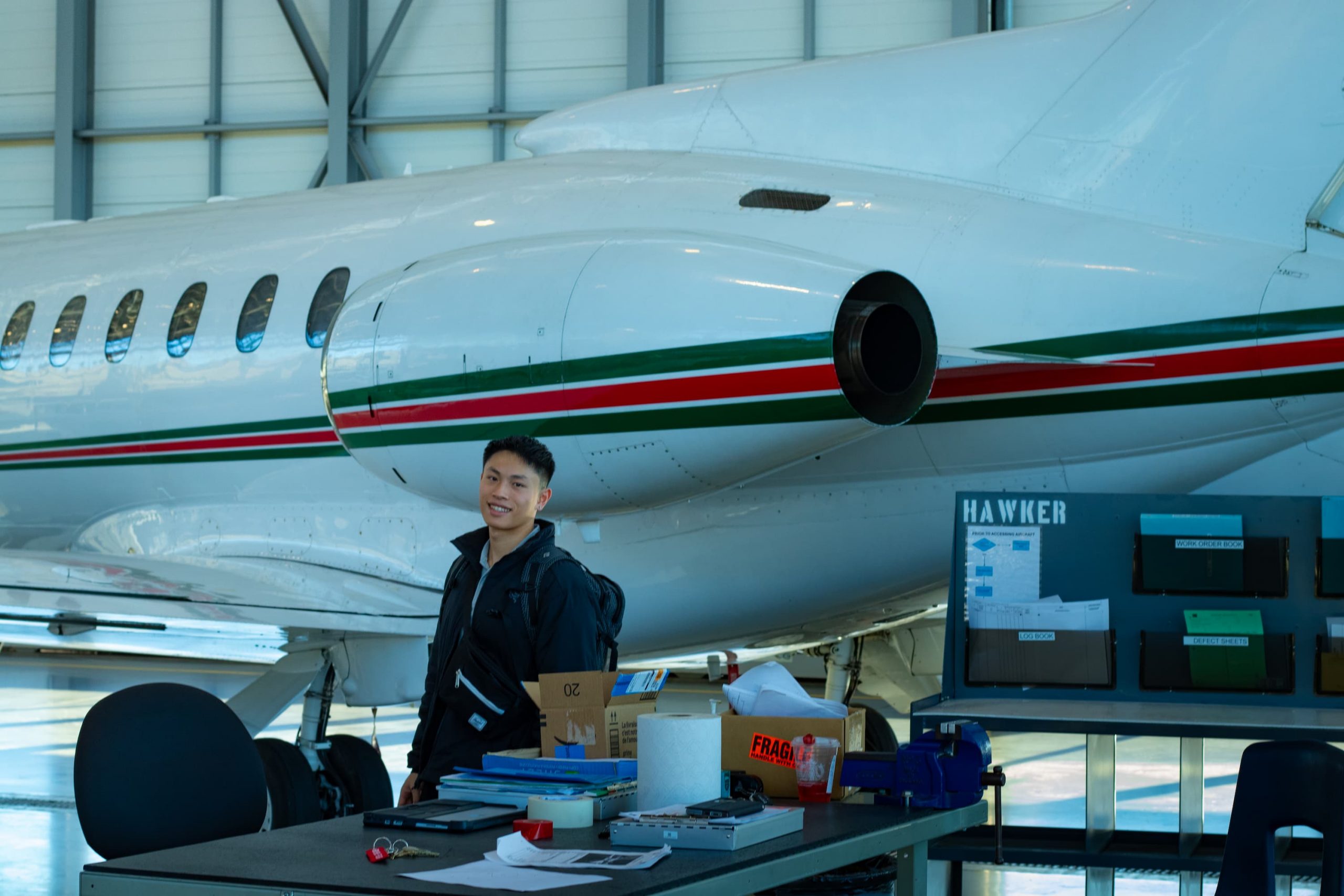Stepping into the BCIT Aerospace Technology Campus for the first time was an inspiring experience. I had the privilege of exploring their brand-new, state-of-the-art flight simulators provided by Flightdeck Solutions. What impressed me most was the level of realism. The cockpit layout, control systems, and visual environment created an immersive experience that felt like stepping into a real airplane. From the moment I entered the simulator, I could tell this was more than just a learning tool; it was a gateway to the future of aviation training.
An immersive training experience for students
I had the pleasure of meeting Gerry Egan, Associate Dean of BCIT Aerospace, who shared insights on the advancements brought by these new flight simulators. These simulators are designed to mimic the intricate systems and environments of the Boeing 737 Max and the De Havilland Q-400 Dash 8, both of which are part of WestJet’s and Air Canada’s fleets. Gerry described the simulators as an “immersive experience for students to be able to understand how all the systems of an aircraft come together and be able to do things in a simulator they wouldn’t be able to do on a live aircraft, such as learning how to put out an engine fire.”
According to Gerry, these simulators will provide students from all of aviation programs with hands-on experience. For example, Flight Operation students can use the simulators to practice going through a standard pre-flight check, enter their flight plan in the flight management computer, and fly the aircraft in and out of any airport in the world. Meanwhile, Gas Turbine students can learn the procedures to start an engine and know how to monitor their instruments during start-ups, which gives them a great understanding on how the engines they overhaul operate. Aircraft Maintenance Engineer students can learn the procedures to turn on all the systems such as electrical, hydraulics, fuel and see how those systems integrate with each other. They can also start the engines, taxi the aircraft to a designated area at the airport, and do full powered run ups all in a realistic setting. This immersive training bridges the gap between theoretical knowledge and practical application.
Training opportunities for BC’s aerospace industry
Access to training opportunities using cutting-edge flight simulators extends beyond BCIT students. For $300 an hour, industry in the aerospace field can rent the flight simulators to train their pilots and maintenance engineers. The flight simulators offer pilots access to a customized training solution in a safe and simulated environment, including practice at specific airports, night flights, and complex scenarios like taxiing, approaches, and landings. The simulator is equipped with an instructor station for real-time scenario adjustments, including weather, or introducing system failures to prepare your pilots for the challenges of real-world flying.

A safe landing
As I left the campus, I couldn’t help but think about the opportunities these simulators will create for students. These simulators provide hands-on experience that is vital in such a technical field. For industry, they offer a cost-effective and highly realistic training option. Visiting the BCIT Aerospace Campus gave me a front-row seat to the future of aviation training. It’s not just about technology, it’s about creating opportunities, pushing boundaries, and preparing for a future where the sky is no longer the limit.
Written by Thomas Luong, BCIT Digital Design and Development student, who is currently completing an internship with the BCIT Marketing and Communications Department.
